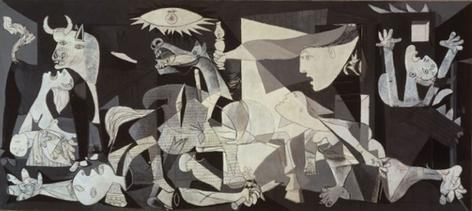Many works of art have revolutionized how we think about ourselves as humans throughout history. Some have even played a role in restructuring our society, politics, and even art.
You may not have noticed just how pivotal a role it plays, but think about it for a moment. Everything we do—and even how we do it—is impacted by art. Our homes, furniture, fashion, approach to cooking, and a thousand other things we take for granted are either directly or indirectly a product of art.
Art is in us. There is the need for food, the need for shelter, and then there is the need to create. The following article explores that unique need and a few of the masters who shook up the world.
The Sistine Chapel – Michelangelo
Michelangelo’s remarkable work on the Sistine Chapel ceiling is hands down some of the most influential art ever created. Its beauty, elegance, symbolism, and scale have brought incomparable awe to any who has been lucky enough to view it in person.
Sistine Chapel Ceiling – Michelangelo
It has been known to blow people’s minds and shake up their entire world as their brains try to fathom how something so beautiful could be achieved. However, a lesser talked about, and more controversial aspect of the mural is the chaotic tangle of naked cardinal bodies, which even depicted graphic genitalia before being later covered up.
Yes, the Italian painter’s expansive display of nudity was so shocking at the time that some even labeled him as immoral and obscene. Whatever the case, Michelangelo’s revolutionary piece had a profound impact on the art movement, and its unfiltered nudity would be an inspiration for countless artists in the generations to follow.
My God Help Me to Survive This Deadly Love – Dimitri Vrubel
Also referred to as the “Fraternal Kiss,” Dimitri Vrubel’s mural is perhaps one of the most striking radical anti-war displays ever produced. Painted on the Berlin wall, which separated Germany after the second world war, it depicts Soviet and German politicians Leonid Brezhnev and Erich Honecker kissing each other deeply.
As the Berlin wall acted as a physical separation of East and West Germany, Vrubel’s graffiti of the two opposing leaders kissing performed as the perfect message against what the wall stood for. It was also the ideal anti-establishment message that graffiti itself is said to embody.
Even years after the wall had been taken down, Vrubel’s piece still stood as a symbol of true love against true hate. Furthermore, it is another rendition of the kissing theme, repeatedly reproduced throughout the ages.
Guernica – Pablo Picasso
It could be said that many of Pablo Picasso’s masterpieces shook up the world. Still, perhaps none had a more significant impact on people’s hearts and political sentiments than that of his 1937 painting titled “Guernica.”
Massive in both size and scope, Guernica hauntingly depicts the bombing of the Basque town Guernica, Spain. The bombing was ordered by Spanish nationalists and carried out by both the Nazis and Italian fascists.
The expressive painting is filled with the horrors of war, depicting violence, death, fire, and gruesome dismemberment, all in Picasso’s iconic abstract style. Ripe with a robust and grim atmosphere and painted solely in gray and black monotones, it stands as one of the most potent anti-war paintings ever created.
Olympia – Edouard Manet
In 1865, French painter Edouard Manet shook conservative society to its foundations with his painting of model Victorine Meurent casually relaxing naked on her sofa while a house servant presented her with flowers.
Nude female figure paintings have presented her as both demure and pure throughout art history. In Manet’s painting, however, the woman holds a direct, almost confrontation stare that unsettles audiences, not to mention that he uses a real woman. Until that point, most were just mythological figures.
Another shocking element of the painting is the name “Olympia” itself, as it was a name associated with sex workers around Paris at the time. This, accompanied by the arched black cat at the end of her sofa, another well-known symbol representing sexual promiscuity, leaves little doubt about what Manet was trying to confront his audience.
The Garden of Earthly Delights – Hieronymus Bosch
Dutch Renaissance painter Hieronymus Bosch is infamous for his shocking and disturbing paintings. Much of his artwork contains images of hell, demons, and other nightmarish imagery, but perhaps none are more stunning than his magnum opus piece titled “The Garden of Earthly Delights.”
In this remarkable triptych painting, Bosch’s disturbing imagination is on full display and has left critics divided. The triptych’s left and right panels represent bizarre renditions of the bible stories of the Garden of Eden and the Last Judgement, respectively. However, the center panel holds the most extreme subject matter.
Depending on your perspective, it represents a glorious utopia or a scene of mass evil. As Bosch lived during the middle ages, many believe it attacks the Christian morals of repression against life’s temptations and an open invitation to humanity to experience total freedom and ultimate sexual joy.
The Bottom Line
From the dawn of time to this day, art has always been one of the most potent tools for shaking up establishments and making changes. This is because it will always stand in direct opposition to violence as a peaceful means for creating change.
















